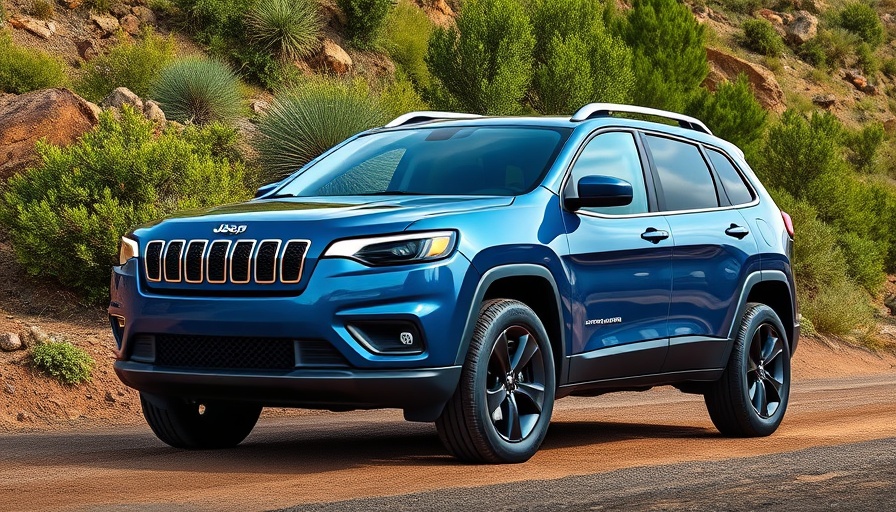
The Resurgence of the Jeep Cherokee in 2026
Stellantis has officially unveiled the 2026 Jeep Cherokee, a significant move aimed at rejuvenating the brand after a period of declining sales that persisted for six consecutive years. Discontinued in 2023 under the leadership of former CEO Carlos Tavares, the Cherokee's return reaffirms Jeep's commitment to its iconic vehicle lineup and addresses consumer demand for midsize SUVs.
A Hybrid Revolution: Technology Meets Capability
The new Cherokee is a notable leap forward as it introduces Stellantis' first hybrid powertrain in North America. Featuring a 1.6-liter turbo-four hybrid engine, the SUV promises an impressive range of over 500 miles on a single tank of fuel. This hybrid system is not just about efficiency; it reflects a broader industry trend toward greener technologies, which is crucial as automakers navigate the evolving landscape of consumer preferences for sustainable vehicles.
Enhanced Features to Attract Buyers
In addition to its innovative powertrain, the 2026 Jeep Cherokee boasts a technology-rich interior, equipped with Stellantis' new Connect One services package. This type of advancement underscores a growing trend where consumer technology within vehicles is becoming as critical as their mechanical performance. The new model's larger dimensions also allow for a 30% increase in cargo space, catering to families and outdoor enthusiasts alike.
Market Positioning and Price Point
With an entry-level price starting at $36,995, the 2026 Jeep Cherokee aims to be competitive in North America's largest vehicle segment. Jeep aims to reclaim its market share with a robust offering designed to appeal to a diverse range of buyers. As the SUV segment continues to expand, the new Cherokee's combination of reliability, technological advancements, and enhanced performance will be pivotal in attracting discerning consumers.
Conclusion
As Stellantis launches the 2026 Jeep Cherokee, the brand is positioned to address previous sales challenges and embrace a future marked by innovation and sustainability. With its hybrid technology and expanded capabilities, the Cherokee is set to reclaim its footing in a competitive market. Stakeholders in business lending may find this resurgence of interest in SUV models brings opportunities for financing and supporting enterprise growth in the automotive sector. This could be an excellent moment for lenders to explore partnerships with dealership networks gearing up for the launch of this promising vehicle.
 Add Row
Add Row  Add
Add 




Write A Comment